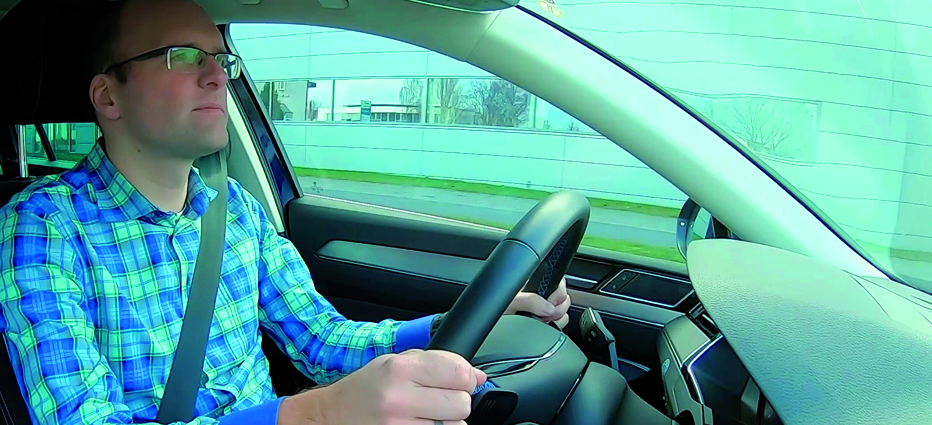
The “Lower Saxony testing ground” has been taken into operation between Wolfsburg and Brunswick (Braunschweig). Volkswagen is also using this new, 7 km test route. There are two reasons for this: in the short term, the aim is to gain further knowledge for assisted driving such as Car2X, and in the longer term the software for developing automated driving is to be improved.
The numerous masts and their equipment are unmistakeable – and attentive drivers on the A39 motorway will already have noticed the cameras between the Wolfsburg-Königslutter junction and Cremlingen. But on this new test route, it is not potential traffic offenders who are being “snapped” every few metres. In fact, quite the opposite – it’s the general traffic that is being recorded here, in order to evaluate it for automated and assisted driving. “The new, ultra-modern test route will provide anonymised data on driving behaviour – data that does not yet exist in this volume,” explains Dr. Sven Klomp. He is the project manager for the preliminary development of assistance systems at Volkswagen.
There are 71 masts located on this approximately 7 km section of the A39, which is a new component in a larger testing ground in the wider Brunswick area. These masts accommodate high-resolution cameras, which evaluate the traffic and driving behaviour with great accuracy. This Lower Saxony testing ground (the “Testfeld Niedersachsen”) is financed by the state of Lower Saxony and by the German Aerospace Centre (Deutscher Luft- und Raumfahrtzentrum, DLR) in Brunswick, and operated by the DLR.
Drivers travelling this route can therefore relax – it is only the position and speed data of the vehicles that is being recorded, before being processed as lines, known as trajectories. So neither the registration number nor the vehicle type or driver details are recorded. What’s more, people are not required to adapt their driving behaviour on this route on account of the project.
Car2X informs and warns the driver
“The main priority for us is that we are able to gather insights and data on how the traffic actually behaves, in order to draw conclusions from that for the software for autonomous and assisted driving,” explains Klomp. Dynamic data is particularly important. The most recent content and findings are already being fed into improving Car2X communication. The first Volkswagen to use Car2X communication is the new Golf. It allows vehicles to communicate with one another and, in future, with the road infrastructure too – for instance, lights – in order to give advance warning of hazards.
The pWLAN-based direct communication coordinates with its environment in a matter of milliseconds, and can therefore inform the driver of hazard locations and situations even before he has noticed them. pWLAN especially facilitates the local communication between vehicles here. Depending on the surroundings, the signal can be transmitted over a range of 150 metres in towns and up to 800 metres in the countryside or on the motorway. “This means that vehicles can warn, for example, about unsafe rail crossings, tails of traffic jams or construction sites,” says Klomp. “Moreover, drivers can be informed about benefitting from the traffic light phasing if they adjust their speed.” However, the road infrastructure is not yet ready for this at present. It needs to be expanded in order to have the ability to send the corresponding signals to vehicles.
But it is already possible on this section of the A39 motorway. Thanks to the interaction of the camera recording technology and Car2X communication, the testing ground can already simulate 100% Car2X equipping in all vehicles. For this, a pWLAN message is generated and sent out for each vehicle recorded by the cameras. At the moment, however, the signals are only sent for special test cycles, and it is only in the next stage that vehicles equipped with the Car2X technology, such as the new Golf, will be able to benefit from this as they pass through this section.
To be able to document the information on the new test section on the A39 between Cremlingen and the Wolfsburg-Königslutter junction as accurately as possible, a digital map of the route was created. All vehicles are localised on this map and provide data, even if they are not yet equipped with technologies such as Car2X. For this, they are recorded accurately and thus provide basic information about traffic events on the motorway. “This data is therefore doubly valuable – in the short term, for assisted driving such as Car2X and, in the longer term, for the software for automated driving,” explains Klomp. The map is repeatedly renewed and kept up-to-date. The data gathered needs to be up-to-date at all times. That’s because the more detailed the records, the more accurately the conclusions from them can be implemented in the software.